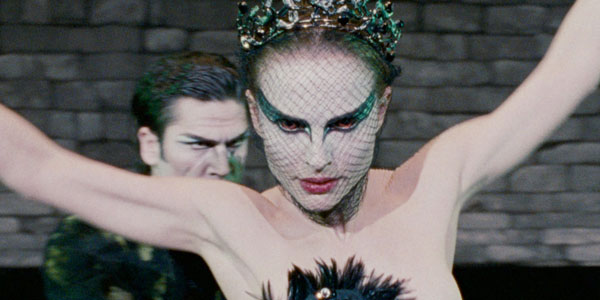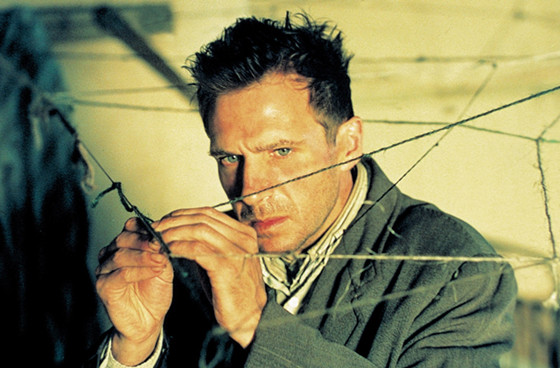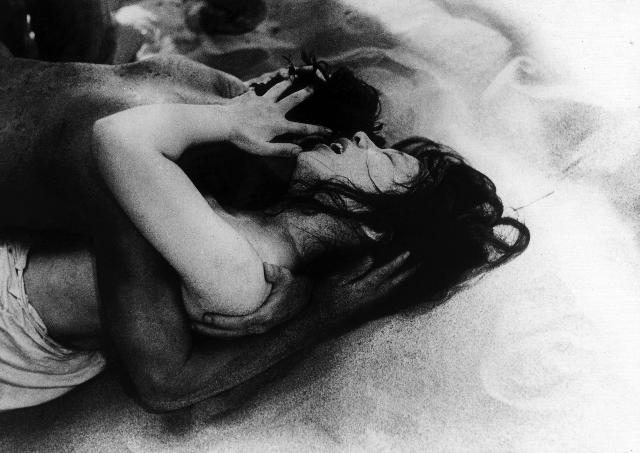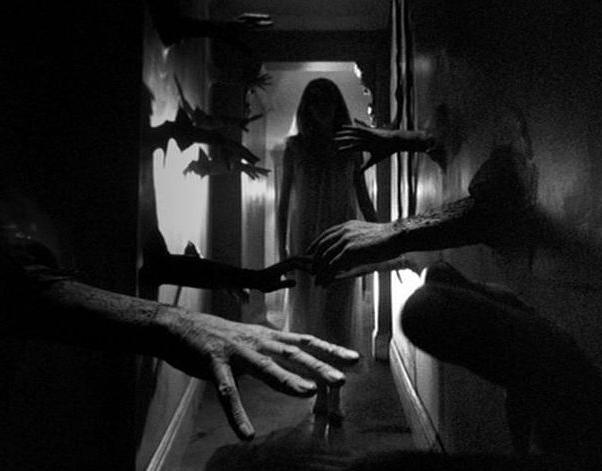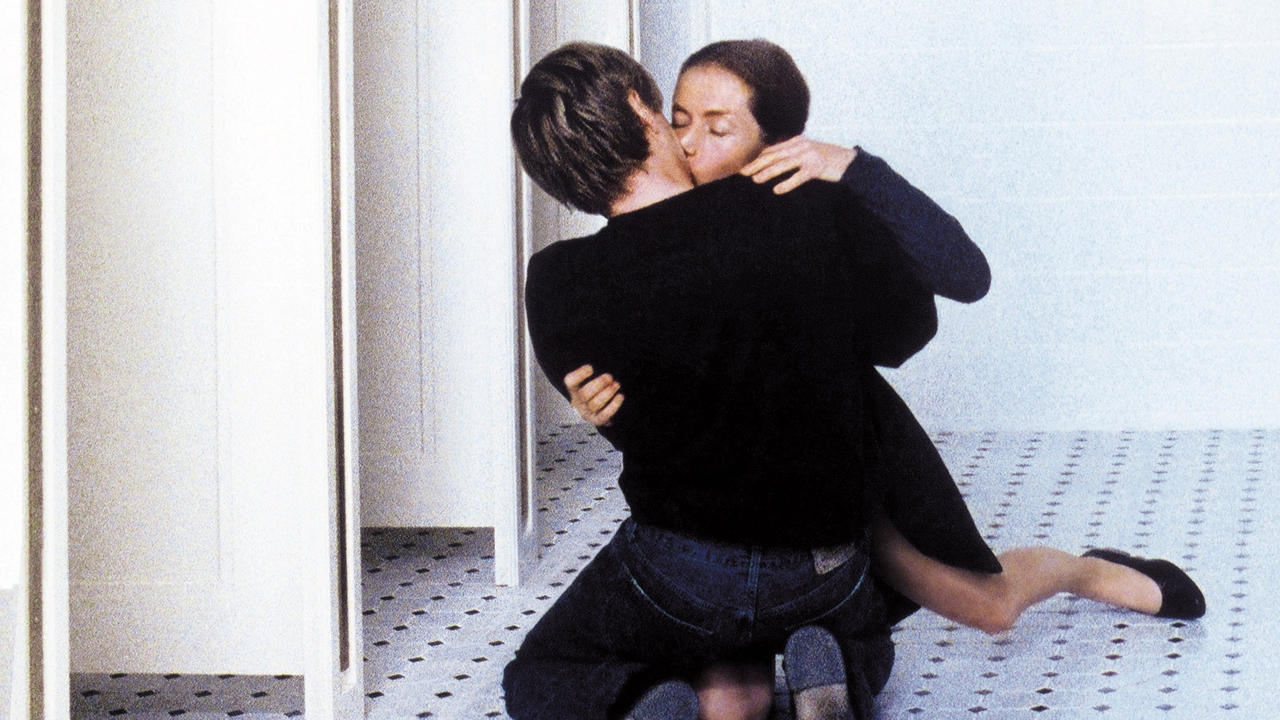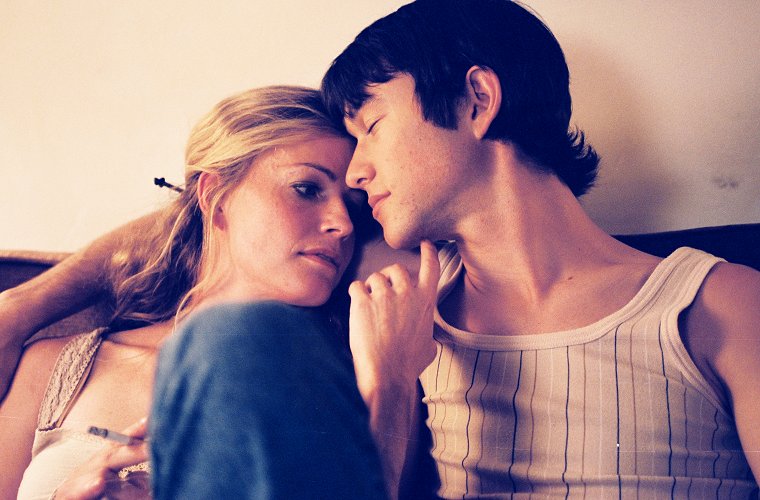Alex Ross Perry’s new film Queen of Earth, a weird homage to the 1960s and 1970s psychodramas, had me thinking about this niche genre. It is a challenge to define. These are films that depict a psychological state through visual symbolism, a subjective camera or an unreliable narrator.
Oftentimes these films play off of the contrasting duality of two central figures, or of one protagonist with a deep seeded inner turmoil that makes it so their persona provides its own contrast. These differences sometimes converge into sameness, or alternately appear to supernaturally transplant from one to the other. These are examples of both types below.
15. Spider
Ralph Fiennes plays Cleg, a disturbed man recently released from a psychiatric hospital. Fiennes is equal parts heartbreaking and terrifying, and due to his illness he is a highly unreliable narrator. It’s a classic premise for a psychological thriller, but David Cronenberg’s oft-unsung masterpiece is a slow burn, though it does allow for plenty in the way of twists and turns.
When Cleg was a young boy, he was profoundly influenced by the death of his mother, revealed to us (as well as to himself) through surreal abstractions and vivid dreams, uncovered in a fog of a long dead memory. Sexuality is a key topic in the psychological drama, and here it grows potential Oedipal. This has a lot to do with the degree to which Freudian psychological has influenced many filmmakers and other artists, often narrowing in on themes of childhood trauma, sexuality and dreams.
Cleg recalls seeing his mother in a nightgown as a boy, something meant for his father, but the role of his mother becomes confused for him in this moment. In his memory, his father was cheating on her with a prostitute, but Cronenberg questions this reality in visual cues. Was there ever any other woman? Has his memory warped and faded with time, or is he repressing something deeper, darker?
The film does provide some answers in the end. Not quite as literal as, say, Hitchcock having a therapist explain Norman Bates in a monologue, though there is resolution. But much like the cinematography of the urban landscape, and much like the human psyche itself, the resolution is murky at best.
14. Martha Marcy May Marlene
The lakeside getaway, the vacation home, the secluded property; these are classic settings for psychological dramas and thrillers. To some degree, “psychological thriller” is a sub-genre of horror, and they share this trope (think camp grounds and old mansions).
In Martha Marcy May Marlene, the great and weirdly titled debut feature of Sean Durkin, the title character (played by Elizabeth Olsen, in a mesmerizing performance) has just left a cult and is taking some time away with her sister (and her sister’s husband) at their family’s vacation home.
That the setting is secluded is important. The absence of the larger society both resigns her to her own thoughts and allows us to more acutely explore the ways the cult has changed her through the eyes of her sister. It also heightens the fear of the “other,” oftentimes a character seen by one of the characters as an interloper.
Here, it is her brother-in-law, and the film manages to put him between the two sisters in a way that does not outright villanize him. It is her sister, with her normal, “acceptable” lifestyle that threatens Martha most, and the threat seems to apply both ways.
Social norms and gender roles are at the film’s thematic core, given a voice through John Hawkes’s cult leader, and seen through the lens of Martha’s experiences there. She has left the cult after finally seeing what kind of person he was, and though it seems that she saw through the proverbial vale, she has been forever changed. As she grows more and more paranoid (will they come back for her?), we are left to wonder if she will ever truly recover from its influence.
13. The Woman in the Dunes
Hiroshi Teshigahara’s classic has the pitch and tone of a fable, of a parable — a simple premise steeped in heavy symbolism, both an obvious and inscrutable allegory. The premise: a man, wandering the desert, collecting bugs, is caught in a storm. He is offered a place to stay for the night, at the home of a widow at the bottom of a deep sand dune.
When he awakens the next morning, the ladder he took to get down is gone, and they will not let him back up. He is trapped, forced to work with the widow whose job it is to constantly dig out sand and send it to the men at the top of the dune, or else be drowned in a sea of it.
There may be more specific cultural meaning to attribute, but in a broader sense it speaks to life itself: a constant struggle to find meaning in the everyday, despite the conscious understanding of our mortality. The correlation between the bugs he collects and the predicament he finds himself in is unsubtle, but points at such large questions about our existence, the purpose of being alive, that its pointedness if a virtue.
There is a sense of the inevitable from the first time we realize his situation. There is no escape. The powers that be saw to that (in the story, the local villagers who collect the sand they dig up—god or government in terms of allegory).
This secluded locale is one of the most oppressive you can imagine, the thick, ever-present mist of the sand blown around them smothers the frame. In the end of the film, there is a choice made by one of the characters that summarizes the film’s point of view perfectly, and the film is unlikely to leave your mind for a long time after.
12. Repulsion
Catherine Denueve’s performance as the meek, nervous, extremely introverted Carol is brilliant, despite in one sense being designed to be blank. It is obvious from frame one that Carol has psychological troubles, and that she is not of sound mind – though Polanski exposes how much sanity she retains very slowly.
This was Polanski’s first English-language film after the critical success of Knife in the Water. They share a dryly cynical detachment, both using small, confined settings (an apartment, a sail boat), to explore the psyche of its character/s when put under duress from an outside influence (dangerous men, in both cases). Carol lives with her sister and her boyfriend, who is always around but doesn’t properly live there.
Polanski makes no small effort to explain the meaning behind the film’s title: she is repulsed by sex and sexuality, especially her own. The “psychodrama” is a fairly loose term, though it can be problematic as to how often they are films made by men about frail or broken women, although they do border on feminist, in their own way.
Repulsion concerns itself with the male gaze, with the expectations placed on women by men. Carol has been abused, and there is a visual implication at the end that may explain it. The famous image of Carol, in a dream, being groped at by a myriad of arms that extend through slits in the walls, is perhaps the single most representative image from this genre: a deep psychic wound, something inescapable and inexplicable.
11. The Piano Teacher
Michel Haneke is very apparently an academic, and some of his films tend to take on the observational tone of a psychiatric text (Cache, The White Ribbon), and his darkest efforts are often steeped in some kind of meta-textual experiment he is playing on his audience (Funny Games, Benny’s Video). Amour was somewhat of a departure (although still clinical in most of its approach), but his psychological dramas are interesting in a different way based on his style.
This film plays like a psychological thriller written and directed by a psychologist. Isabelle Huppert is captivating as Erika, a piano teacher who still lives with her domineering mother and harbors dark sexual obsessions. She begins an affair with a student, but her compulsions (which include violent sexual fetishes) disturb him.
She lashes out with violence against another student, a perceived threat, but not in a shocking emotional outburst—rather it is pre-meditated, implying the control Erika has over her emotions, and displaying the dark depths of her growing psychoses.
Haneke builds some suspense around the violence, in particular during a climactic scene in her apartment involving the fulfillment of a disturbing fantasy, but openly subverts much of it by the end. The Piano Teacher is a dark but considered psychosexual case study, and while Haneke is decidedly “not for all tastes,” sometimes you have to be willing to crawl into the darkness.
10. Dogtooth
This recent Greek film is the darkest of comedies, a disturbing examination of parenting and child rearing. In it, a father (and to a lesser extent, the mother) of two girls and a boy in their late teens intentionally mis-educated them on the ways of the world. Whether it is teaching them the wrong meaning of words, or telling them the world is full of man-killing cats, it seems they have purposely taught them all manner of wrong information.
And not just misleading, but comically incorrect (that “zombie” is the word for a small flower, for example, or when they discover a dirty word for part of the female body, they are told it means “light switch”). They have been home-schooled their whole lives, never being allowed to leave the family’s property — and they have been fooled. But, why? This is a challenging question, and it is likely that the spirit of the film lies more in the question itself than in whatever answer you find for it.
On one level, it is clearly about parents wanting to shield their kids from the dangers of the world, only to do more harm than the world could have ever reasonably posed. It also may be parodying the idea of what is seen as objectionable (sex, of course, and also entertainment).
The interloper in this film is the babysitter, who is confused by having to babysit adults. There is a particularly shocking fallout after one of the “children” is found with copies of Jaws and Rocky IV, where the response is as or more violent than either film.
It’s a jarring, uncomfortable film, not an easy film to recommend to general audiences. It is as smart and cunning as it is disturbing. It is just not exactly fun to watch.
9. Mysterious Skin
Brian and Neil have nothing in common. They [barely] remember knowing each other once as kids, playing little league together on the same team. Now they are young adults, Brian still living in their hometown, Neil having moved to New York City. But these two share one life-changing event, a night which only one of them remembers. Brian believes aliens abducted him when he was a kid, dreaming about the time he and another boy were “taken.” But Neil knows the truth, and has been suffering with it in a very different way ever since.
The truth is implicit through the whole film, though not explicit until its final, devastating scene (if you wish to remain unknowing, skip ahead). What Brian has remembered as an abduction by aliens was in reality the night that he and Neil were lured back to their little league coach’s home, where they were molested. While Brian has suppressed the event, having blocked out those several hours from his memory (or perhaps so traumatized that he never had a memory of it at all), Neil has endured its memory ever since.
Neil is gay, and director and screenwriter Gregg Araki takes due consideration to let us know that he was budding into his sexuality prior to the trauma (and thus was not “made gay” by being raped by his coach), but his sexuality also complicates his reaction. He has moved off to the big city, where he has sex for money, and is mostly interested in men that resemble in age and stature his old coach.
Brian suffers from nightmares, lurid dreams of an invented memory, not especially pleasant but easier for him to digest than the truth. When he sees a picture of Neil from an old baseball photo, he recognizes him as the boy from his dream. When the two finally meet, the catharsis for the both of them is profound, a recognition of their shared trauma and an understanding that, though they could not be any more different as young adults, the shared crime from their childhood drastically altered both of their lives.
